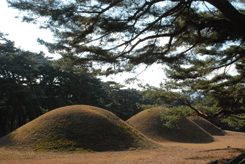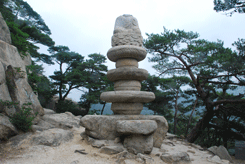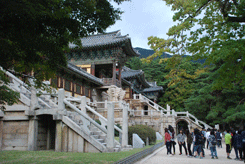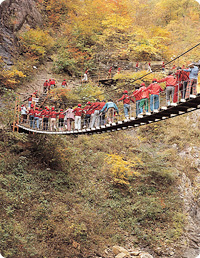National Park
 |
 |
 |
Gyeongju
Gyeongju (Cental eastern region)
Designated as the Korea's only historical national park. Once the splendid capital of the Silla dynasty (BC57-AD935) Gyeongju, although now only provincial town still holds the remnants of its glorified past. Known as being the richest repository of ancient history and arts in Korea, Gyeongju simply cannot be missed on your itinerary. Temple sites with weathered stone pagodas, royal tombs, Buddhist bas-reliefs, and fortress ruins are scattered throughout this ancient city. The visitor is truly overwhelmed by many remains of ancient Silla temples, royal tombs together with one of the earliest observatories in the world. It is therefore, no surprise, that many call Gyeongju the museum without walls. The area was further enhanced by being designated a UNESCO site and placed within the world's top ten most historical cities. The 8th century Seokguram grotto has been described as the epitome of the Buddhist sculpture and is regarded as one of the very best masterpieces of Buddhist art. The Bulguksa temple was the home of many Buddhist monks and architects who poured their thoughts and ingenious spirits into it in the hope of embodying the bliss of Buddha. The temples were added to UNESCO's world heritage list in 1995. Namsan in the heart of Gyeongju is home to many historic and cultural remains from the Silla kingdom.
Namsan became a religious sanctuary in a country completely dominated by Buddhism. Its seventeen valleys abound in legends. Over 150 temples were believed to have existed on these slopes. The people during this Buddhist golden era prayed for peace and prosperity for the kingdom by building temples in the valleys and carving Buddhist images on the cliffs behind. 4 ancient fortress ruins, 147 temple sites, 118 Buddha images carved into the rocks, 96 pagodas, 22 stone lanterns, 19 lotus pedestals, 13 royal tombs, and 672 cultural assets still remain in Namsan from the Silla period (BC57- AD935) to the present day.






